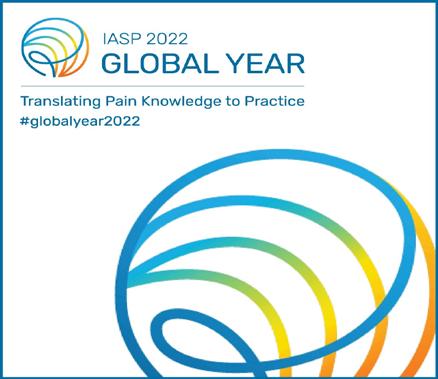
3 minute read
Prevalence and associated psychosocial and health factors of chronic pain in adolescents: Differences by sex and age
from APS OCT22 eNews
by auspainsoc
Journal Reference: Wager J, Brown D, Kupitz A, Rosenthal N, and Zernikov B. Prevalence and associated psychosocial and health factors of chronic pain in adolescents: Differences by sex and age. European Journal of Pain. 2020;24;761-772.
DOI: https://doi.org/10.1002/ejp.1526
Reviewer: Greg Evans, Physiotherapist, Children’s Pain Management Service, Department of Anaesthesia and Pain Management, Royal Children’s Hospital, Melbourne
Review of article
Data was collected from 2,208 adolescent participants aged 10–18 years from five schools in Germany. Within this group of participants, 52% were female. The mean age was 12.95 years.
Aims
Wager et al. aimed to quantify the prevalence of chronic pain among adolescent school students and determine how chronic pain prevalence differs between girls and boys of different ages. An additional aim of this cross-sectional study was to determine the psychosocial and health factors associated with an adolescent’s risk of having or developing chronic pain and determine which of these factors were more prominent in each age group and between the two sexes.
Method
Data was collected across five schools in Germany as part of the CHAP (“Chronic headache in adolescents: the patient perspective on health care utilization”) study. Cross sectional data was then extrapolated to form the data subset for this article utilizing a cross-sectional observational design.
Students completed an electronic survey during school hours. The survey addressed several different subsections, including demographic factors (age, sex, socioeconomic status [SES], migration background), pain characteristics (location, frequency, duration, intensity, chronic pain, pain related school absence), psychological factors (depression and anxiety), school factors (school satisfaction and perceived school performance), and health behaviour factors (sleep issues and physical activity).
The study also mentions a parental survey. However, no further information on the nature or delivery of this survey is provided.
Results
One third of the sample (33.6%; n=765) reported chronic pain, characterized as weekly pain experienced for a period of greater than three months. The three most common locations of pain were the head (21.4%), musculoskeletal system (15.7%) and abdomen (10.7%).
Females had a 29% increased probability of having chronic pain (compared to 16% in males) per additional year of age. The SES was only significant for boys aged 10-13 years, with higher socioeconomic status correlating with increase chronic pain in this subgroup. Individuals with depression and anxiety were 105% and 51%, respectively, more likely to experience chronic pain. School satisfaction showed significant association with pain however, perceived school performance did not meet statistical significance overall. Poor sleep was associated with a 234% increased risk of experiencing chronic pain and significant across all age and sex subgroups. The number of times an individual completed the recommended physical activity per week was not statistically significant towards their risk of experiencing chronic pain.
Conclusions
Psychological factors and poor sleep demonstrate significant risk factors for the potential of an adolescent to experience chronic pain, which is supported by multiple research articles.
However, statistically significant differences in additional risk factors can be observed when specific subgroups of adolescents are analysed separately, including school satisfaction and perceived school performance.
Reviewer’s critique & take-home messages
There is limited research assessing the age and sex related differences in risk factors associated with chronic pain. While the relatively large sample size provides confidence in the findings, the cross-sectional design of this study means that causal inference cannot be made. The reviewer agrees with the author’s discussion that further age and sex related research data is necessary (including prospective studies) to determine age and sex specific factors contributing to prevalence of chronic pain and clarify the cause-and-effect relationship.
The multitude of psychosocial and health related factors that contribute to an individual’s overall potential to experience chronic pain, or their perpetuation of the cycle of chronic pain, are varied and complex. This, and other articles help to shed light on some of the patterns within the presentation of chronic pain to help guide therapy interventions as well as shape the potential for widespread, multimedia, preventative health promotional measures.
As clinicians within the space of paediatric/ adolescent chronic pain it is important to always work within a family-centred care model of practice and consider the wide variety factors that contribute to the pain experience of our individual patients.
Declaration
The author has no conflict of interest to declare in reviewing this article.




